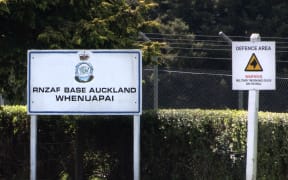Clear threats to this country's ecosystem have been identified from the chemicals in firefighting foam [PFAS].

PFAS chemicals have been detected in water near firefighting sites at 70 to 140 times above safety guidelines. Photo: AFP
This is spelled out in the biggest study into those impacts done for the government by the Ministry for the Environment.
The study coincides with an Australian parliamentary inquiry that has concluded that the public advice on the health risks to people, advice that this country shares, has been too soft.
The ecosystem study reveals, from unpublished data, that PFAS chemicals have been detected in water near firefighting sites at 70 to 140 times above safety guidelines.
Ongoing investigations have also detected the long lasting compounds at elevated levels around a dozen military bases, airports and petrochemical plants nationwide.
The Defence Force first were alerted to this four years ago and the public a year ago.
The wait for the first local survey of ecosystem impact does however appear to show some gaps:
- There is a complete lack of any toxicological data for NZ species
- There is no information on the occurrence of PFAS in New Zealand terrestrial fauna
- What little data there is on PFAS in New Zealand aquatic ecosystems is contained within unpublished consultant's reports
The study by necessity defaults to the global research, which while also thin in many places, shows the compounds created in a lab 70 years ago and dubbed "forever-pollutants" because they take thousands of years to break down, are building up in the oceans and in living things.
"Evidence exists to indicate that exposure to PFAS compounds can result in reproductive, developmental and immunotoxicity in marine mammals and [birds] ... so it is possible that in the future concentrations of these compounds within apex predators may reach levels which could have adverse impacts on the populations," the study said.
The study surveys research literature into PFAS's impacts on soil, marine life and land animals, insects and birds.
One of the few positives to emerge is that some plants appear to be quite resistant to the foam.
However, the study said it may be possible for watercress to accumulate concentrations of PFAS that could pose a risk to higher organisms or even human consumers.
Eels too appear prone to building up high levels, but as for kina, paua and shellfish, little is known.
One particular sobering conclusion from the study comes from looking at how the chemicals bio-magnify as they climb the food chain until they reach fish and bird eggs.
Chicks exposed to PFOS [Perfluorooctanesulfonic acid] had impaired immunity, indicating "the transfer of PFOS from mother to egg may be a risk to birdlife," it said.
"There are significant concerns about the potential for these compounds to harm early life stages."
Another grim fact to be underscored is about new types of firefighting foam.
New Zealand has banned two old types of firefighting foam, PFOA and PFOS, but the study said newer foams contain PFAS compounds that may bind to the blood "as strongly or more strongly" than the banned foams, so they may build up in the body just as much, though, the newer compounds may be of lower toxicity.
The study recommends:
- Study of how native species might be contaminated
- A national stocktake of PFAS stockpiles, waste and usage
- Development of safety threshold levels for the new foam compounds
- That New Zealand plug into international research
The study said this country had a relatively small number of contaminated sites, at least compared with Australia and the US.
In Australia, a parliamentary inquiry into PFAS contamination has just reported back, with a recommendation relevant on this side of the Tasman [because New Zealand has copied the public health advice promulgated by Canberra], that "the Australian Government review its existing advice in relation to the human health effects of PFAS exposure, including to acknowledge the potential links to certain medical conditions".
"Overseas jurisdictions appear to have been more 'upfront' in communicating the possible health effects of exposure to PFAS," the inquiry committee said.
"This presents a confusing message to the Australian public and contributes to an impression amongst community members that the Australian Government is downplaying the risks in order to avoid taking responsibility for the contamination."
In the US, the latest health advice is that as levels of PFAS increase in the body, the risk of contracting a range of several diseases linked to the chemicals also increases.
A systematic review two years ago "has concluded that PFOA and PFAS are immune hazards to the human population", head of the National Institute of Environmental Health Sciences Linda Birnbaum said.
In 2016, the German Human Biomonitoring Commission rated seven human health effects as well-proven, relevant, and significantly associated with exposure to PFOA and/or PFOS:
- Fertility and pregnancy - the length of time it takes to get pregnant and gestational diabetes
- Weight of newborns at birth
- Lipid metabolism
- Immunity after vaccination, immunological development
- Hormonal development, age at puberty/menarche
- Thyroid metabolism
- Onset of menopause
RNZ asked the government here if it should consider doing a review too into the potential health effects of PFAS exposure.
The Environment Ministry responded, saying it had ignoring the Australian recommendation to review the public health advice.
"Our position hasn't changed and is consistent with the findings of Australia's independent Expert Panel that reviewed international studies and evidence for health effects of PFAS," the ministry said in a statement.





